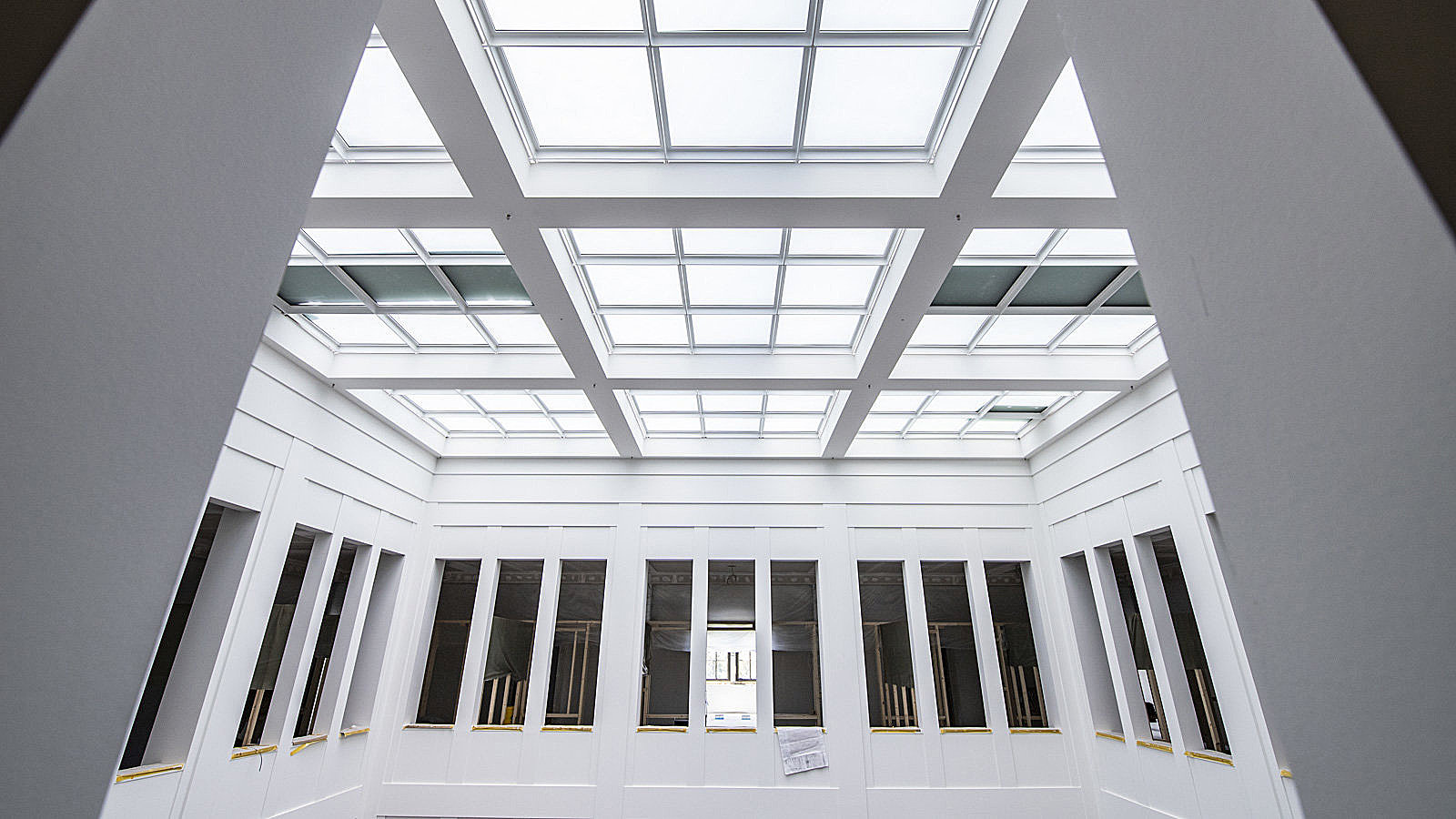What’s Happening at One of the Most Important Construction Sites in the City?
Angela Malz, Director of the Chemnitz University of Technology library, invites to the TIETZ on 21 August 2019 for a journey through time, from the “Alte Aktienspinnerei” to the new university library
-

An emblematic room: the central reading room of the new university library, which will allow plenty of natural light, is spread over three floors. Photo: Jacob Müller
On 21 August 2019, Angela Malz, Director of the university library, will speak at the TIETZ about the conversion of the “Alte Aktienspinnerei” to the new Chemnitz University of Technology library. This event takes places at 18:00 in the event hall of the city library at Moritzstr. 20. The lecture is a part of the ongoing series “150 Years of the Chemnitz City Library”. Admission is free.
Malz takes her listeners on a journey through time, from its beginnings to the current status of construction work. She will answer the question of why an old factory building is being converted into a university library, show pictures of the conversion process, and invite you to a virtual tour through various rooms of the library and all that awaits future visitors.
The land right behind the main bus terminal is currently one of the most important construction sites in the city, not only due to its price tag of 52 million euros, but also in light of the notable history of the building. The former factory is already recognisable from the outside as a university library, due to its signature façade. Construction work on the central library should be finished by the end fo the year, according to SIB (Sächsisches Immobilien- und Baumanagement), who is in charge of construction management. If all goes according to plan, as of January 2020, the building will undergo safety inspections, shelves will be set up in April, and the move of more than 1.2 million books into the 12,300 square meter library will commence in June.
Background: History of the “Alte Aktienspinnerei”
The “Alte Aktienspinnerei”, built in the style of Historic Eclecticism, came to be in 1858 as a result of the founding of a joint stock company. It was the largest spinning mill in Saxony, with 60,000 spindles. Deviating from earlier spinning mills, the building was designed by architect Friedrich Theodor Roschig to be built entirely out of iron and stone. Due to the fire risk of a large spinning mill, wood was largely avoided as a building material. This made the building one of the most fireproof in the city. Spinning ended at the building in 1914, and it was the property of the city of Chemnitz as early as 1905. During the Second World War, the building was badly damaged and lost its roof and top floor. Since then, the building has been used as a food outlet, a temporary home for the ruined opera house, a department store, city library, office building, puppet theatre, and finally as a gallery. The building has been property of the Free State of Saxony since 2011.
(Author: Mario Steinebach / Translation: Jeffrey Karnitz)
Matthias Fejes
20.08.2019





